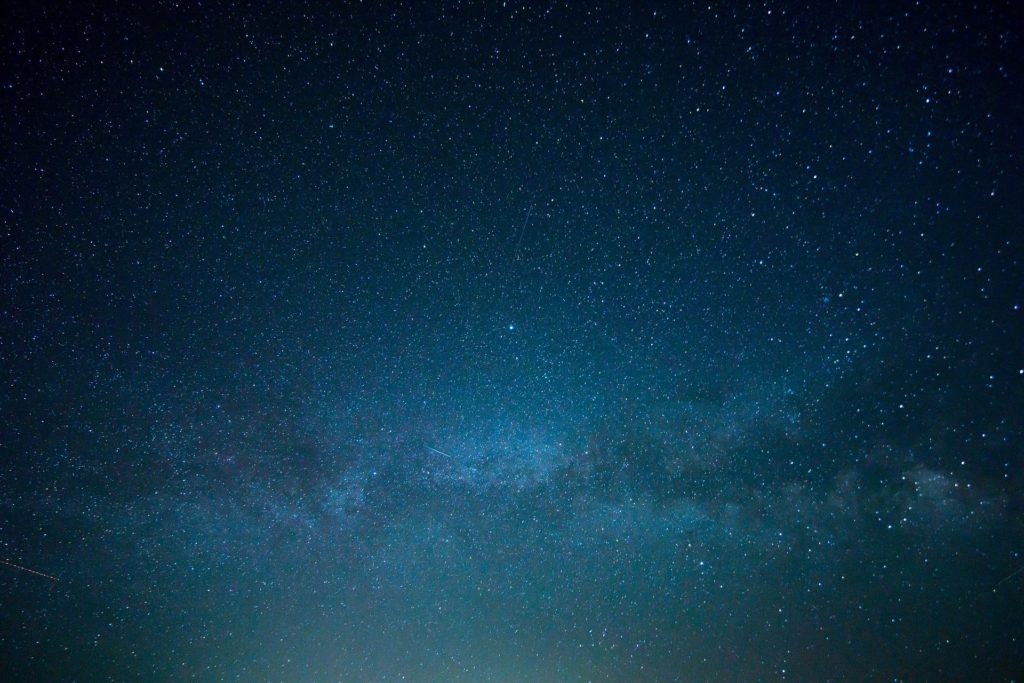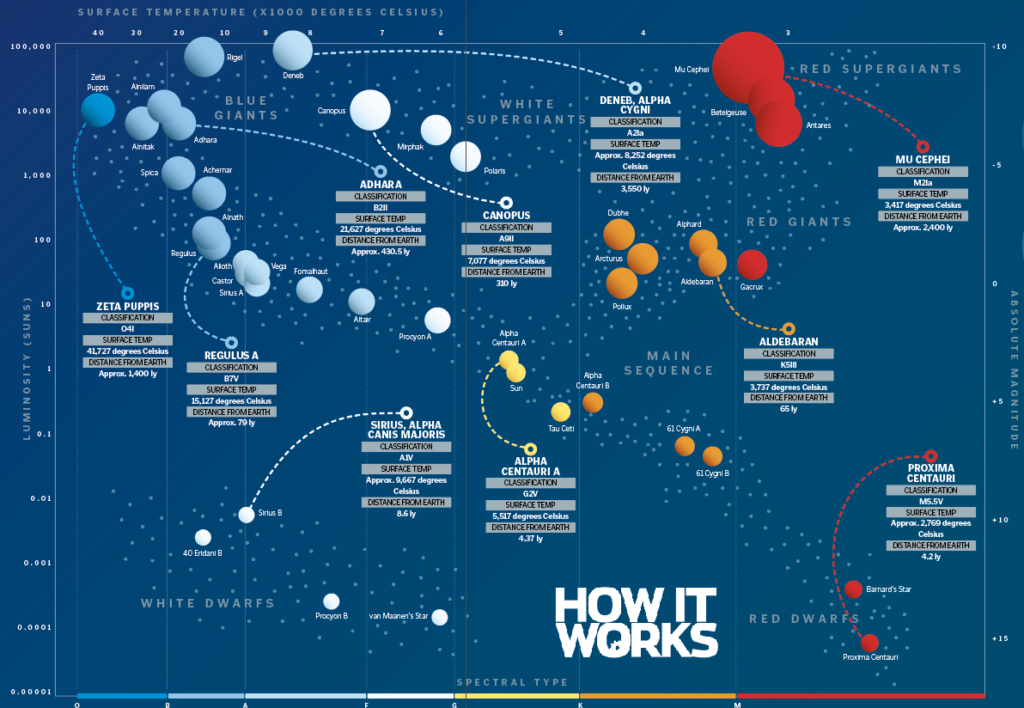How are stars classified?
by Scott Dutfield · 27/01/2020

From white dwarfs to red giants, discover how astronomers have categorised the cosmos
Within our galaxy alone there are over 100 billion stars, so how do astronomers keep track of what’s what in the universe? From the late 19th century stars were classified based on ‘hydrogen lines’. These lines are gaps in the light spectrometry of stars, as the gases in their atmosphere absorbs certain light wavelengths. Those with the biggest hydrogen lines were classed as ‘A’ stars, descending in size going through the alphabet.
It wasn’t until the relationship between temperature, mass and luminosity was discovered that a new system was created. Astronomer Annie Jump Cannon condensed and reordered the system to O,B,A,F,G,K,M. Stars were arranged from hottest at O to coolest at M. This order is still used today.
In the current MK system, stars are also attributed a figure to indicate temperature scale, and a Roman numeral to indicate luminosity. For example, the Sun is a G2V star. ‘G’, places the Sun in a group of stars ranging in temperature between 5700 – 4700°C. ‘2’, indicates a subscale within the G group, 0 being the hottest and 9 being the coolest, and finally ‘V’ shows its place on the scale of luminosity – with ‘I’ being the brightest.
Click to expand
Types of star
Main sequence
Our Sun is a member of the most abundant group, making up around 90 per cent of stars in the universe. These stars show perfectly the relationship between surface temperature and luminosity – the hotter the star the brighter it shines.
White dwarf
Burning bright white, these stars are the skeleton of a red giant. When it reaches the end of its life, a red giant will shed its hydrogen and helium-fusing gas layers to produce a planetary nebula. What’s left is an extremely hot core – up to 150,000°C.
Giants
A star’s colour is related to its temperature – blue stars being the hottest and red the coolest. Blue giants have high mass and surface temperature, while red giants are below 4,000°C. Red giants are formed from a bloating main sequence star
Supergiants
The biggest stars in the universe, supergiants span the entire stellar spectrum of the MK system, O to M. Between 10 and 70 times the mass of the Sun, their luminosity can outshine the Sun tens or hundreds of thousands of times.
This article was originally published in How It Works issue 128
For more science and technology articles, pick up the latest copy of How It Works from all good retailers or from our website now. If you have a tablet or smartphone, you can also download the digital version onto your iOS or Android device. To make sure you never miss an issue of How It Works magazine, subscribe today!






